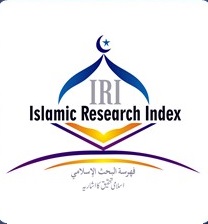The Messiah, His Disciples, And the Law of Moses
DOI:
https://doi.org/10.58932/MULF0019Keywords:
Torah, food laws, covenant, Israelites, Pharisees, MessiahAbstract
This article explores the relationship between the Messiah Jesus, his disciples and the Law of Moses, to which the Qur’an, the Torah [Hebrew Bible] and the New Testament all refer.. After initial references to the Qur’an and the Hebrew Bible, the author discusses four separate scenes in the New Testament, which highlight the relationship between Jesus and the Torah. The author discusses the contrast between the attitude of the Pharisees and that of Jesus to the Law but explains that, by rejecting the laws about food, Jesus was not abolishing the totality of the Law but simply abrogating its dietary regulations. The author concludes that the food laws mentioned in the Torah were of a temporary nature and that the death, resurrection and ascension of Messiah Jesus introduced a new era and a new covenant, which included people from all nations of the world as the people of God without their having to adhere to all the regulations of the older covenant.
References
Acts 2:1-4.
Acts 10:2.
Acts 10:3-8.
Acts 10:9-20.
Acts 10:28-29.
Acts 10:34-35.
Acts 10:34-43.
Acts 10:44-47.
Acts 11:3.
Acts 11:26.
Barnwell, K. (2011). Bible translation: An introductory course in translation principles. SIL International.
Boyarin, D. (2012). The Jewish Gospels: The Story of the Jewish Christ. New Press/ORIM.
Boyarin, H., Adrian. The Theology of John Calvin. Part One: The Christian’s Conflict with the World. One, 129-136.
Carson, D. A. M., Douglas. (2019). An Introduction to the New Testament Arabica, 66(5), 179-182.
Colquhoun, H. M., Stoddart, J. F., & Williams, D. J. (1986). Second‐Sphere Coordination–a Novel Rǒle for Molecular Receptors. Angewandte Chemie International Edition in English, 25(6), 265
Coogan, M., Brettler, M., Newsom, C., & Perkins, P. (2018). The New Oxford Annotated Apocrypha: New Revised Standard Version- (6:4-5). Oxford University Press.
Davidson, R. (1979). Genesis 4:28. Cambridge University Press.
Dickerson, P. L. (1997). “The Sources of the Account of the Mission to Samaria in Acts 8: 5-25”. Novum Testamentum, 39(Fasc. 3), 210-234.
France R.T, M., Jerry Walter. (1978). The Gospel of Mark. Emory University.
Fredriksen, P. (2003). “What Parting of the Ways?” Jubilees 22:16 the ways that never parted, 353.
Freidenreich, D. M. (2011). Food and Table Fellowship, in the Jewish Annotated New Testament, 650.
Fuad, C., Leviticus, (2011). “What has Leviticus 17 to do with Deuteronomy 12.20–27? The literary relationship between the Deuteronomic and Holiness Codes on cult centralization and animal slaughter”. (Holy Bible, New International Version). Journal for the Study of the Old Testament, 45(1), 20-26.
Glenny, W. E. (2012). “The Septuagint and Apostolic Hermeneutics: Amos 9:11-12” Bulletin for Biblical Research, 22(1), 11-12.
Gospel, Z., Vevian. (2021). The Pauline Epistles in Arabic: Manuscripts, Versions, and Transmission (Vol. 8). Brill.
Green, J. B., Marshall, I. H., & Peterson, D. (1998). 'Salvation to the End of the Earth' (Acts 13: 47): God as Saviour in the Acts of the Apostles. Witness to the Gospel, 89-95.
Grüneberg, K. N. (2012). Abraham, Blessing and the Nations: A philological and Exegetical Etudy of Genesis 12: 18 in its narrative context (Vol. 332). Walter de Gruyter.
Harris, R. L. (1981). Theological Wordbook of the Old Testament 403-404.
Hays, J. D., Luke. (2012). “Sell everything you have and give to the poor: the Old Testament prophetic theme of justice as the connecting motif of Luke 18:18-30”. Journal of the Evangelical Theological Society, 55(1), 43.
Stefano. (1991). Cipriano de Rore as reader and as read: A literary-musical study of madrigals from Rore's later collections Princeton University.
Kilgallen, J. J. (1996). “A rhetorical and source-traditions study of (Acts 2:33)”. Biblica, 77(2), 178-196.
Kilgallen, J. J. (2001). The Probative Force of Peter's Speech: Acts 15, 7b-11. The Jews to gain salvation, 250.
Kilgallen, J. J. (2005a). “Faith and forgiveness: Luke 1:77”. Revue Biblique (1946), 372-384.
Kilgallen, J. J. (2005b). “Faith and forgiveness: Luke 8:48, Acts 4:10”. Revue Biblique (1946), 372-384.
Klawans, J. (1998). “The Law in the Jewish Annotated New Testament”. Journal for the Study of Judaism in the Persian, Hellenistic, and Roman Period, 29(4), 820.
Kornilov, M., & Moysyuk, Y. (2014a). Treatment of Bile Stricture after Liver Transplantation with Application of Full-Covered Metallic Stents. Liver Transplantation, 20, 464.
Kornilov, M., & Moysyuk, Y. (2014b). Treatment of Bile Stricture after Liver Transplantation with Application of Full-Covered Metallic Stents. Liver Transplantation, 20, 644.
Korpela, J. (2001). Prince, saint, and apostle: Prince Vladimir Svjatoslavič of Kiev, his posthumous life, and the religious legitimization of the Russian great power. 19:11-13 (Vol. 67). Otto Harrassowitz Verlag.
Mann, T. W. (2013). The book of the Torah. Wipf and Stock Publishers.
Matthew, M., Luke, Moloney, Francis J. (2012). 5: 17-18
Matthew, S., David C. (2014). “The summary of the Gospel”. HTS: Theological Studies, 70(1), 18-28.
Metzger, B. M. (2001). The Bible in translation: Ancient and English versions. Baker Academic.
Montague, R., & Taylor V, J. W. (2017). “Schools of the Bible: Contours of a Divine Plan for Christian Education”. The Journal of Biblical Foundations of Faith and Learning, 2(1), 184-187.
Moorthy, A. K. (2014). A Seal of Faith: Rereading Paul on Circumcision, Torah, and the Gentiles 16:3. Columbia University
Mulzac, K. (2001). “Genesis: Its Theological Connections with the Creation Motif”. Journal of the Adventist Theological Society, 12(1), 17:10-14.
Nasr, S. H., Dagli, C. K., Dakake, M. M., Lumbard, J. E., & Rustom, M. (2015). The Study Quran. A new translation and commentary, 19, 128.
Nogalski, J. D. (2015). “Three Faces of Hope: Amos 9: 11–12 and Acts 15: 12–19”. Review & Expositor, 112(2), 311-315.
Painter, J. (2004). Just James: The brother of Jesus in history and tradition. Univ of South Carolina Press.
Pardosi, M. T. (2015a). “The Concept of Sanctification in the Book of Leviticus: A Study of Leviticus”. Journal Sociology Study, 5(10), 12-15.
Pardosi, M. T. (2015b). “The Concept of Sanctification in the Book of Leviticus: A Study of Leviticus”. 11:11-47; 20:25-26. Journal Sociology Study, 5(10).
Pardosi, M. T. (2015c). “The Concept of Sanctification in the Book of Leviticus: A Study of Leviticus”. 11:43-45. Journal Sociology Study, 5(10), 775-784.
Paul, W., Stephen. (2022). Romans: Text, Readers, and the History of Interpretation. Wm. B. Eerdmans Publishing.
Peckham, D.N. Freedman, (1983). The Composition of Deuteronomy 4:5-8. The Word of the Lord Shall Go Forth: Essays in Honor of David Noel Freedman in Celebration of His Sixtieth Birthday (1), 217.
Zechariah (2016). “Psalm, I”. Scandinavian Journal of the Old Testament, 30(1), 2:8; 22:27-28; 67:21-27.
Rowe, R. (2018). God's kingdom and God's son: The background to Mark's Christology from concepts of kingship in the Psalms (Vol. 50). Brill.
Rustomji, N. (2008). The Garden and the Fire: Heaven and Hell in Islamic Culture. 22:1-5. Columbia University Press.
Saeed, A. (2011). How Muslims View the Scriptures of the People of the Book: Toward a Reassessment? In Religion and Ethics in a Globalizing World: Conflict, Dialogue, and Transformation (pp. 4066-4540). Springer.
Sanders, J. N. (1955). “Peter and Paul in the Acts”. New Testament Studies, 2(2), 22-23 and 26.
Szkredka, S. (2017). Sinners and Sinfulness in Luke: A Study of Direct and Indirect References in the initial Episodes of Jesus' activity (Vol. 434). Mohr Siebeck.
Telford, W. (1999). The Theology of the Gospel of Mark. Cambridge University Press.
Walaskay, P. W. (2002). “Matthew”. Interpretation, 56(4), 17-20.
Wenham, G. J. (1979). The Book of Leviticus. Wm. B. Eerdmans Publishing.
Witherington, i. (2018). Novum Testamentum, 60(3), 341-344.
Wright, C. J. (2013). Old Testament Ethics for the People of God. InterVarsity Press.
Downloads
Published
How to Cite
Issue
Section
License
Copyright (c) 2023 South Asian Journal of Religion and Philosophy (SAJRP)

This work is licensed under a Creative Commons Attribution-NonCommercial 4.0 International License.









